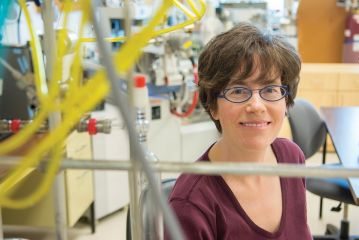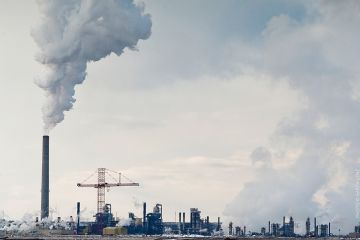Climate change and the media
- Patty Pitts
If Canadians complained as much about a lack of science reporting as they did about hockey coverage, climate change stories wouldn’t get bumped off the front page, says one of Canada’s foremost science reporters. Peter Calamai, a long-time journalist for the Toronto Star, made his remarks to an overflow crowd in the Bob Wright Centre last month as part of “Climate Change and the Media: Scientists, Scribes and Spinmeisters,” a public panel discussion organized by UVic’s Pacific Institute for Climate Solutions (PICS) and moderated by UVic’s Vice President, Research, Howard Brunt.
“You have a personal responsibility to become knowledgeable and aware of the issues [discussed] here tonight,” said Calamai about the need for public engagement on media coverage of science. He was sitting on a panel with PR executive Jim Hoggan, author of Climate Cover-Up; Times Colonist Editor-in-Chief Lucinda Chodan; and PICS Director Dr. Tom Pedersen.
Calamai also challenged researchers to do a better job at communicating their work, while admitting that he lacked the evidence to know what it takes to engage people in science. “Part of that involves the media. Reporters need capacity and training for insightful coverage.”
Chodan spoke of the challenges she faces in balancing competing news interests, navigating a rapidly changing media platform and ensuring reporters have the expertise to cover climate change, which is “at the contours of science and politics, and the most difficult to cover.”
She reminded the audience that reporters are “gifted generalists” who are committed to balance and fairness but who are also “almost genetically or by training” attracted to a dissenting position.
Achieving balance and fairness is problematic, said Hoggan, when positions are presented by official-sounding organizations that are, in fact, lobby groups backed by industries. With the science around climate change getting stronger, says Hoggan, why is there “an industry devoted to climate change confusion?”
He talked about a group called the “Friends of Science,” funded by the Alberta oil and gas industry, and described them as an “astroturf” group that looks green but is “100 per cent fake.” He criticized the fact that lobby groups in Canada and the United States have to disclose who they work for, but “astroturf” groups don’t.
“By trusting no one we lose an opportunity to solve this very important problem,” said Hoggan. “Journalists need to ask about the qualifications of their science sources and the funding behind their groups.”
Pedersen was critical of columnists that confuse opinion and fact and “cherry pick” short-term climate trends to use in their arguments against the existence of climate change. “It takes 30 years to define a trend,” he said. “To make a trend where no actual trend exists suggests something is happening when something is not.”
He also urged researchers to speak out about inaccurate reporting. “Scientists are complicit by not being more outspoken or more accessible.” Video of panel discussion »
In this story
Keywords: climate change, media




